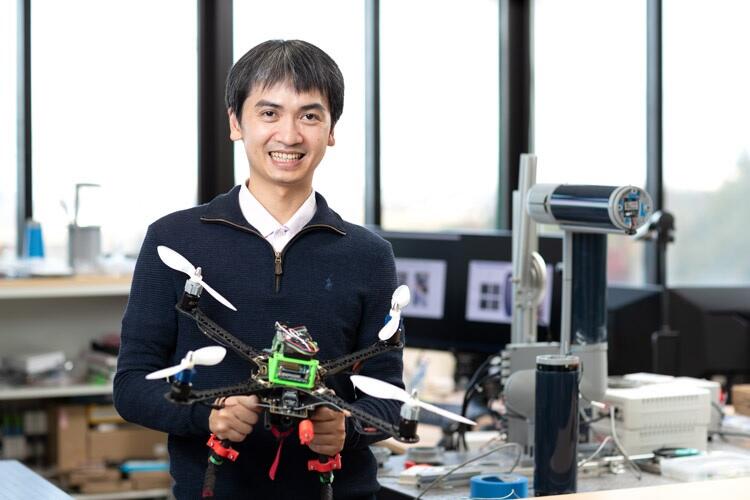
This installment of Science Portal's special feature "Researchers from across the sea," introduces Anh‐Van Ho, Associate Professor in the Human Information Science Research Area, Japan Advanced Institute of Science and Technology (JAIST). Born and raised in Vietnam, he was fascinated by Japanese 'Monozukuri' (manufacturing or craftsmanship) and came to Japan with the goal of researching and developing soft robots. Ho is aiming for a society in which humans and robots collaborate using soft robots that do not harm humans or objects.
A desire to reproduce Doraemon's tools
The development of robots has progressed rapidly in recent years, supporting society in various fields, including manufacturing and logistics. In the era of super‐aged societies, robots are expected to play an even greater role, but at the same time, new issues are emerging. As existing robots are made of hard materials, such as metal, they may injure humans or damage various instruments that they come in contact with. There is even a risk of damage to the robots themselves.
As a result of this robots made of soft materials, such as silicon, are attracting attention. Ho has developed a variety of soft robots inspired by nature and is engaged in research regarding their practical application.
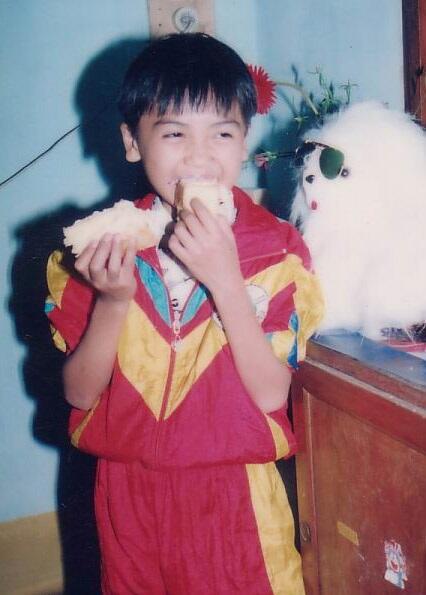
(courtesy of Anh Van Ho)
Ho's hometown is Hạ Long City, east of Vietnam's capital, Hanoi. He grew up only a few hundred meters away from Hạ Long Bay, which is registered as a UNESCO World Heritage Site. The city has long been one of the most popular tourist spots in Vietnam, attracting many foreign tourists. Vietnamese, English, French, Chinese, Japanese, and many other languages are spoken here. Having grown up in such an environment, Ho recalled, "I think I was aware of the importance of foreign languages from an early age."
The trigger that sparked his interest in science was Japanese manga: "When I was in the third grade of elementary school, a Vietnamese version of 'Doraemon' was released. It was the first time I had ever read manga, but it was so fun that I became interested in science and technology." Ho went on to say, "Even now, my dream is to reproduce Doraemon's tools."

Studying robotics in Kyoto and interacting with neighboring university students
Subsequently, Ho entered Hanoi University of Science and Technology. It is one of the most prestigious universities in Vietnam. There, he was able to interact with researchers from Japan and other countries. Since his supervisor was a graduate from the Department of Robotics, School of Science and Technology, Ritsumeikan University, he began to consider attending the same university and graduate school.
Ho earned his undergraduate degree and came to Japan when he was 23 years old. In addition to his research in robotics, his interest in Japanese culture led to his active participation in events for international students. He also interacted with university students from Kyoto University, Ryukoku University, and other neighboring universities, and gained experience communicating in Japanese.
During this time, he sensed the potential of soft materials. While speculating whether the fingertips of a robot could be created to resemble those of humans, he had an inspiration that flexibility could be imperative. However, since the idea of constructing robots with soft materials was not yet widely recognized, it did not materialize.
After completing his doctoral program, he spent one year as a postdoctoral fellow and then joined Mitsubishi Electric Corporation. Ho was engaged in research regarding motor control while working for the company. He found that having learned basic Japanese social manners, such as phone and email etiquette, during this time, was extremely helpful in his career development. "Although I was at the company for only two years, I am very grateful for the social experience I gained there," reflected Ho.
Focusing on the adaptability of animals
During his two years at the company, the potential of soft robots was gradually recognized. Ho, with his long‐standing ideas in mind, decided to return to university. After working as an assistant professor at Ryukoku University, he attained the position of an associate professor at JAIST in 2017. Ho stated, "It was a wonderful environment with an abundance of materials and facilities I had never seen before." He took advantage of this environment to accelerate the development of his ideas.
The starting point was to ask himself, "What if this were flexible?" It is currently impossible to make everything soft. Hard materials must be used for batteries and circuits. However, if even a small degree of softening can be achieved, it may be possible to produce new functions.
To discover the relevant clues, Ho focused on animals living in nature. Animals adapt to changes in their environment without thinking. However, it is not easy to achieve the same adaptability with a robot. A robot made of hard materials requires a tremendous number of calculations to control its position or power.
However, if the material used is soft, the calculations required can be significantly reduced. For instance, even though an obstacle appears in the path, the robot does not need to avoid it, as it can simply slightly deform to pass the obstacle. Although softening the material may reduce durability, this situation can be compensated for by designing replaceable parts, for example, through modularization.
"I believe it my mission to ensure that soft robots are widely accepted," said Ho. He outlined pathways to achieve this goal: "First, we have to appeal to the potential and get people interested in soft robots." He went on: "Then, I would like to see more and more inquiries come in, asking, 'Can soft robots solve our problems?' From there, I believe that we can expand in various ways."
Safety and reliability are of utmost importance
Some robots are being developed in collaboration with external partners. The catalyst was the robot that reproduced the propulsive force of an eel moving through water. A project to apply this technology to an arthroscope is underway in collaboration with Nagoya University Hospital. The robot under development has a diameter of 4 mm. It must be small enough to enter the joint through an incision in the skin.
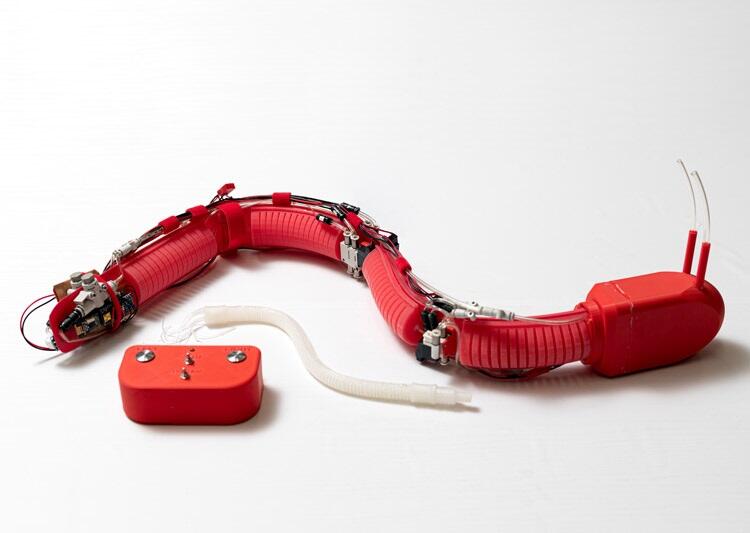
When using robots in such fields, such as medical and nursing care, safety and reliability are of utmost importance. To ensure these characteristics, the use of soft materials that will not cause injury even when they come into contact with humans is recommended.
Attempts are also underway to incorporate functions in robots that are similar to those of human skin. The skin is a tactile sensor that detects surroundings. At the same time, it also serves to convey softness and warmth to those who touch it. If robots could have these functions, there is no doubt that their potential would expand significantly. "I'm sure that it will be helpful in various situations," said Ho, "for example, even a person who has difficulty communicating through words can respond to a user's request by sensing through touch."
Alternatively, using soft materials for propellers on a drone may lead to improvements in safety and reliability. Such propellers were designed with inspiration from dragonfly wings. They deform to absorb the shock upon collision with an obstacle and immediately return to their original positions to keep moving. In addition, integrated sensors detect information about the obstacle, which can be used for control.
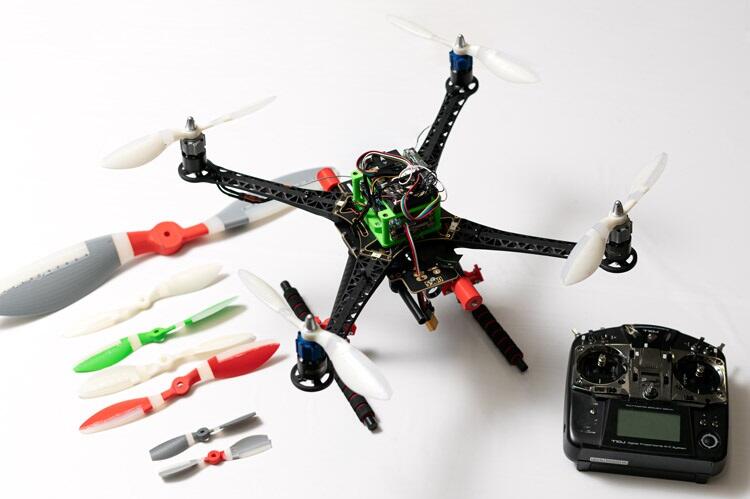
Taking advantage of the benefits of Japanese 'Monozukuri' for the needs of the world
Approximately 20 graduate students are affiliated with Ho's laboratory. Many come from different countries and speak different languages. Students aim to develop robots that are useful to society based on their own ideas. A variety of ideas are generated through a friendly rivalry among the students so that the 3D printer for molding various components is almost continuously in operation.
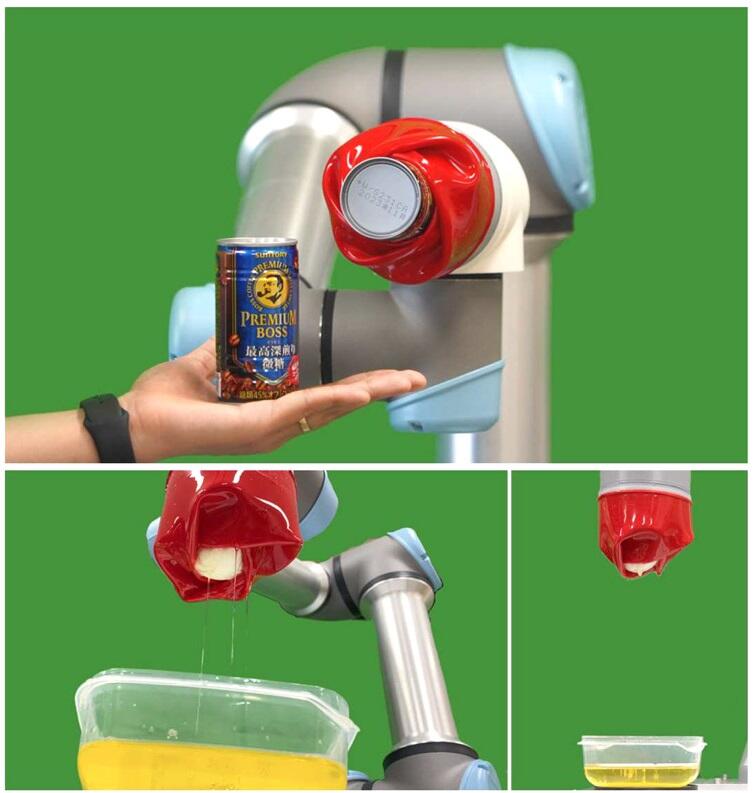
(courtesy of Anh Van Ho)
Ho observed, "Because this is a graduate school without undergraduate programs, everyone here is a graduate of another university. So, they come in with a strong sense of purpose." For example, a graduate student whose parents run a farm where they grow fruit trees is working toward introducing a robot that can select and harvest fruits as well as collect and analyze data. There is no doubt that soft materials are preferable to avoid damaging fruit, which are valuable products.
Ho said that he was impressed with the quality of Japanese products even when he was in Vietnam. This impression originates from Japanese 'Monozukuri', whereby quality increases through a series of incremental improvements. Ho believes it necessary to take advantage of the benefits of Japanese 'Monozukuri' and develop products that meet the diverse needs of Japan and the rest of the world. He stated, "Even the latest technology now will not be used in five to 10 years. Therefore, it is important to be flexible in our thinking." Thus, it would be important to gain experience in various places and expose oneself to different ways of thinking.
Ho would like graduate students in his laboratory to conduct their research abroad, even for a short period of time. He advised, "If you are going to do research abroad, I would say that it is critical to learn the local language. It is possible to conduct research in English alone, but if you want to be active or understand the culture, I encourage you to learn the local language." Ho added, "If you could master a language, your horizons would greatly expand."
Ho aims to develop flexible robots with flexible ideas. What he sees ahead is a future in which humans and robots work well together, each taking advantage of the other's unique characteristics.
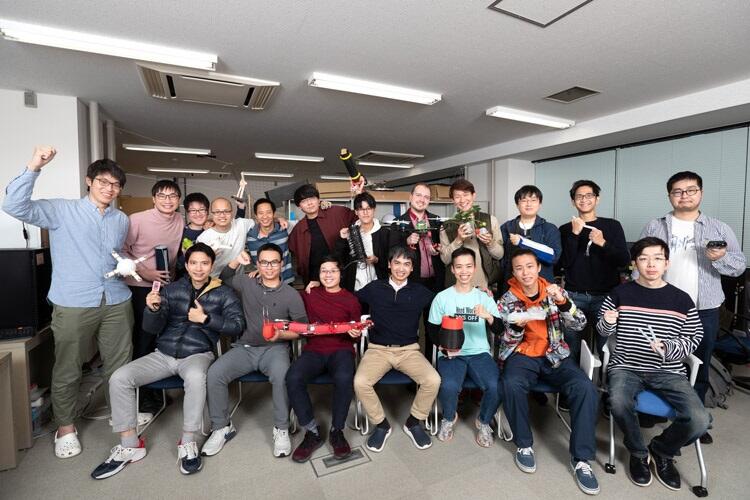
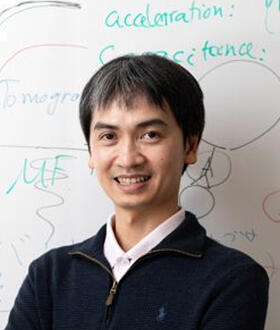
Profile
HO Anh Van
Associate Professor, Human Information Science Research Area at Japan Advanced Institute of Science and Technology (JAIST)
After graduating from Hanoi University of Technology, he came to Japan in 2007. Obtained a Ph.D. in Engineering from Ritsumeikan University. After working as a JSPS Research Fellow, a researcher at Mitsubishi Electric Advanced Research Institute, and an assistant professor at Ryukoku University Faculty of Science and Technology, he has been in his current position since 2017.
Original article was provided by the Science Portal and has been translated by Science Japan.




